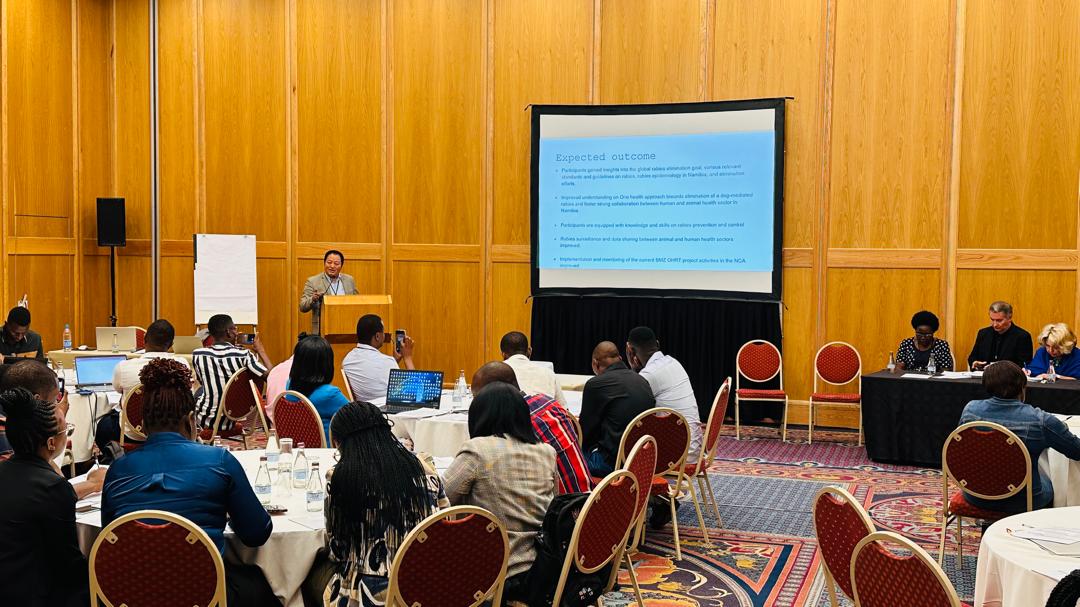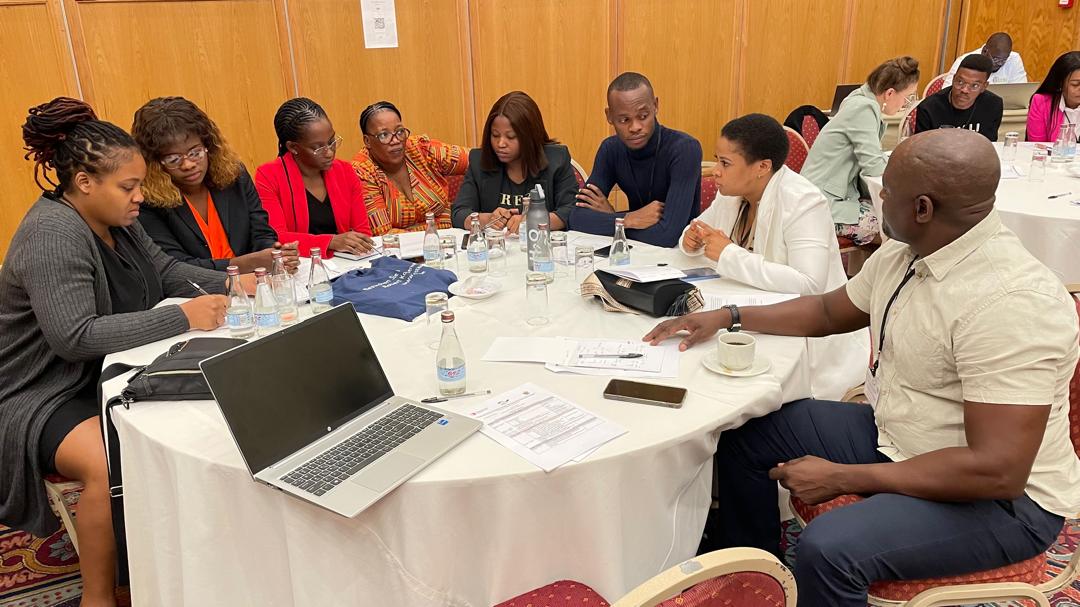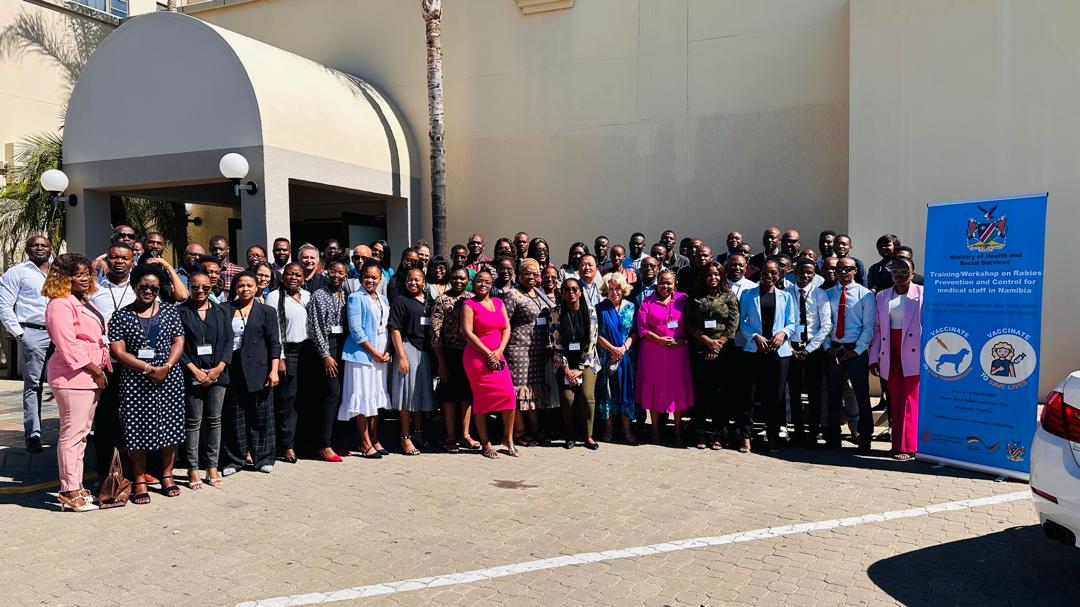A three-day training workshop on rabies prevention and control was conducted from March 4-6, 2024, in Windhoek, Namibia. The training/workshop aimed to enhance the knowledge and skills of medical professionals in dealing with rabies cases and to support Namibia’s efforts to eliminate dog-mediated rabies by 2030. The training was attended by 74 participants, including medical doctors, nurses, surveillance officers, veterinarians, and public health students from the Northern Communal Areas (NCA) of Namibia, as well as officials from the Ministry of Health and Social Services and the Directorate of Veterinary Services in Windhoek.
The event began with an introduction of participants, followed by welcome remarks from Dr. Albertina Shilongo, Chief Veterinary Officer of Namibia. Opening remarks were also given by Ms. Phillomina Ochurus, Director for Health Information Systems, Ministry of Health and Social Services (MOHSS), Dr Sirak Hailu Bantiewalu from the World Health Organization’s country office in Windhoek, Namibia and Dr. Tenzin Tenzin from the World Organisation for Animal Health (WOAH) Sub-regional representation for Southern Africa in Gaborone, Botswana. All the speakers underscored the importance of rabies control and highlighted the crucial role that a human and veterinary professional play in the fight against rabies through a One Health collaboration.
Day 1 focused on global updates on the “Zero by 30” goal, the epidemiology of rabies in Namibia, and the implementation of the National Rabies Control Program. Topics covered included rabies in animals and humans, rabies patient management in hospitals, sampling and sample shipment process, and the diagnosis of rabies in both humans and animals.
Practical exercise on rabies PEP risk assessment. Picture © Tenzin Tenzin (woah) 2023
Day 2 featured discussions on rabies exposure categories, human and animal rabies prevention, and rabies education programs. Topics included pre-exposure prophylaxis (PrEP), post-exposure prophylaxis (PEP), rabies immunoglobulin (RIG), intradermal rabies vaccine (IDRV), and integrated bite case management (IBCM) and rabies PEP risk assessment.
Day 3 focused on rabies surveillance in humans and animals, dog bite management, and data collection and reporting system, verbal autopsy methods, and the impact of SMS reminders on PEP compliance. A finding on knowledge, attitude, and practice of rabies surveys in the Northern Communal Areas of Namibia was also presented at the training.
A group exercise on rabies post-exposure prophylaxis (PEP) risk assessment was conducted. This included case scenario analysis, constructing a decision tree for dog bite incidents, human and animal rabies cases, and a dog bite and PEP data management and reporting system.
The training was facilitated by Professor Lucille Blumberg from the National Institute for Communicable Diseases, South Africa, and supported by Dr. Tenzin Tenzin from WOAH, Botswana and veterinarians from the Directorate of Veterinary Services (DVS), Namibia.
A pre- and post-training assessment was conducted online. The survey evaluated participants’ performance, with good scores reported at the end of the training. Participants expressed their appreciation for the knowledge gained and intend to share their learning with colleagues to improve rabies surveillance and control in Namibia.
This training provided an opportunity for medical professionals in Namibia to strengthen their understanding of rabies prevention and control, particularly in conducting risk assessments for PEP and collaborating across sectors. The continuous engagement and consultation among veterinary and human health sectors are expected to improve one health collaboration to tackle rabies and other infectious zoonotic diseases in Namibia.
The workshop was jointly organized by the World Organisation for Animal Health’s Sub-Regional Representation for Southern Africa, Botswana, the Ministry of Health and Social Services (MOHSS) and the Directorate of Veterinary Services in Namibia. Funding support was provided by the WOAH administered BMZ OHRT Project (Germany).


